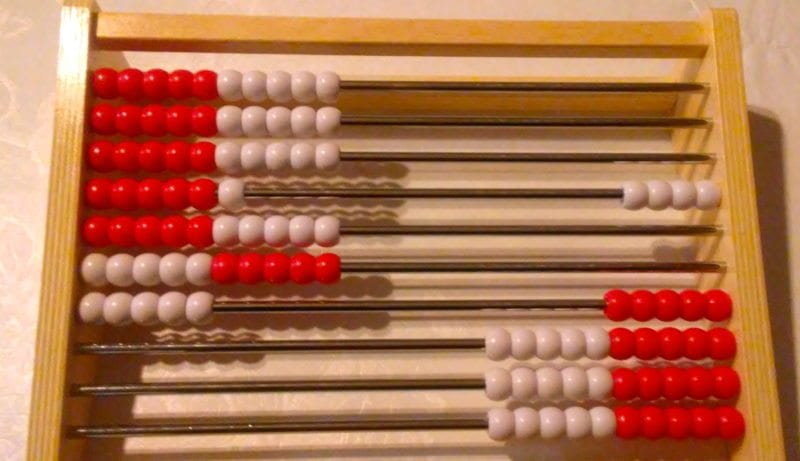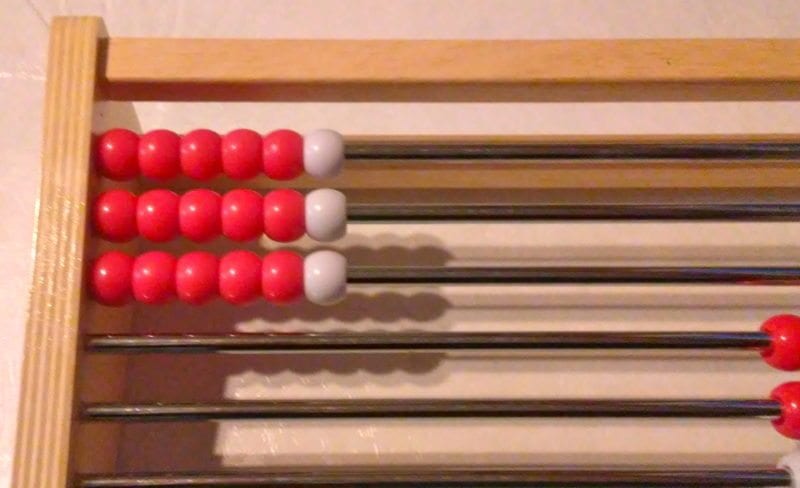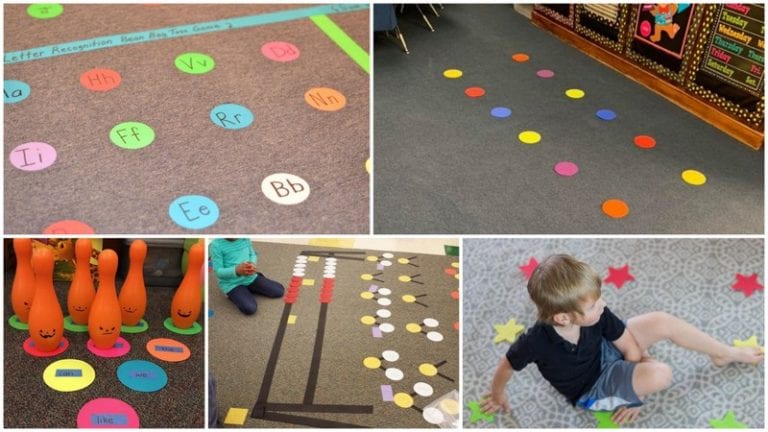Every year, I have students who really struggle with understanding how numbers are composed of smaller numbers. Seventeen is made up of ten and seven. Eight can be broken up into five and three.
When children can easily compose and decompose numbers, they understand how the parts combine to make a whole. They use this knowledge when adding and subtracting, flexibly breaking up numbers to make operations easier. For example, when adding eight and seven, a student might split seven into five and two. It’s then easier to add eight and two to make ten first before adding the remaining five.
8 + 7
8 + 2 + 5
10 + 5
15
Some students pick this concept up right away. Others need more time, and repeated practice, to develop their understanding of how numbers are structured.
What Is a Rekenrek?
My favorite way to support students with composing and decomposing numbers is by using rekenreks. In fact, I think the rekenrek is the best math manipulative for my younger math students and my math intervention groups.
You may have seen a 20-bead rekenrek in kindergarten or first grade classrooms before. Think of a rekenrek as a tricked-out abacus. Made up of rows of ten plastic beads each, a rekenrek is designed to build an understanding of the five-structure and ten-structure of numbers. Every row has five white beads and five red beads, providing a visual model how numbers are composed.
Ask young students to push over eight beads and they might start by slowly counting out eight individual beads one-by-one. When children understand the five-structure of numbers, they push over all five red beads and then an additional three white beads to make eight. They might even count out two beads on the right side of the rekenrek and push over the remainder, knowing two and eight make ten.

Take Skills Further with the 100-Bead Rekenrek
Students who struggle with the addition and subtraction of larger numbers benefit from continued practice with a rekenrek. The 100-bead rekenrek supports students with adding and subtracting two-digit numbers, especially if they need a physical model to manipulate.
Thirty-six plus 25 may be too abstract for some students to wrap their brains around. One strategy is to have them push over 36 beads and 25 beads and count the total number of beads. I also urge my students to first count the full rows of tens and then count the remaining beads. This encourages them to see and use the ten-structure when adding and subtracting larger numbers.

A 100-bead rekenrek can also be used with one-digit by one-digit multiplication. Take six times three. In the image below the beads form an array, with three rows of six. A student can be taught that it is easier to count the red beads by skip counting by fives rather than counting each individual bead. Three groups of red beads is fifteen and the additional three white beads makes eighteen.

This is also a visual way to model partial products. The red beads (three groups of five) and the white beads (three groups of one) together make three groups of six.
These are just some of the ways that rekenreks are a valuable tool for teaching math, especially when students struggle with grasping how numbers are composed of other, smaller numbers.
Do you use rekenreks in your classroom? What do you think is the best math manipulative for developing number sense?

